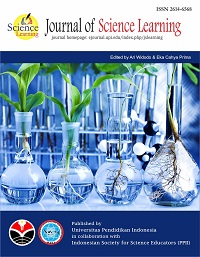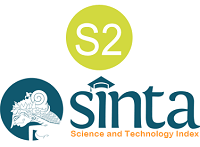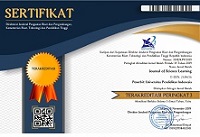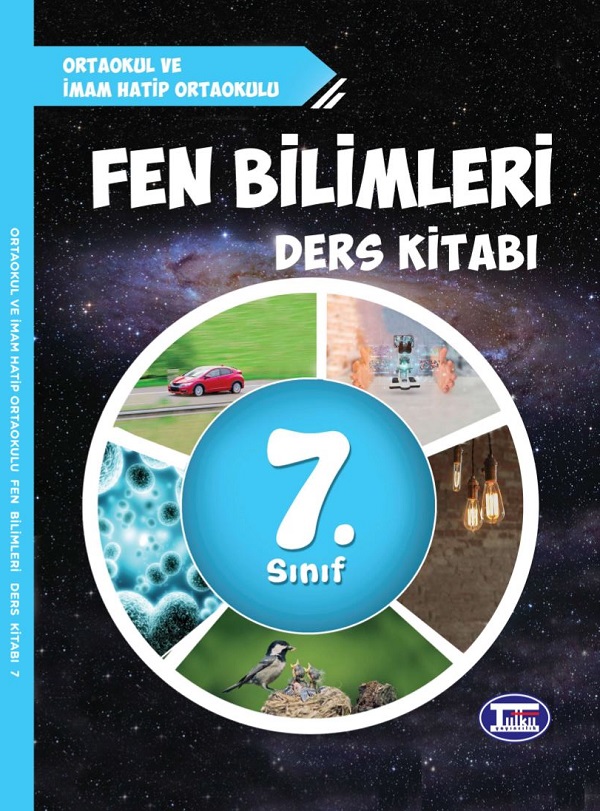
Text Readability Level Investigation about Biology Subjects-related Units in 'Science 7 Textbook'
Abstract
This study investigates text readability level investigation about biology subjects-related units in 'Science 7 Textbook'. A document analysis method was used in this study based on a qualitative research approach. The textbook, which has been used since the 2019-2020 academic year, has been selected as the study material. In the textbook, a total of 15 texts were randomly determined from two units related to biology subjects, one for each of the learning outcomes specified in the 2018 Science Course Curriculum. In calculating the readability levels of the texts, the 'Ateşman Readability Formula' was used. The findings obtained as a result of the analysis showed that the overall readability levels of the texts in both units were in the 'medium difficulty' category. Furthermore, when the findings of each unit were examined on a subject basis, it was determined that the texts belonging to all of the topics included in both units (Cell and Divisions, Reproduction, Growth and Development in Living Beings) were found in the 'medium' category. These findings were interpreted as the science textbook prepared for the seventh grade for the student level in terms of readability.
Full Text:
DOWNLOAD PDFReferences
Akçay, B., Akçay, H., & Kahramanoğlu, E. (2017). Ortaokul fen bilimleri ders kitaplarının Bloom Taksonomisine göre incelenmesi [Examination of secondary school science textbooks according to Bloom's Taxonomy]. Uludağ Üniversitesi Eğitim Fakültesi Dergisi 30(2), 2017, 521-549.
Altun, M., Arslan, Ç., & Yazgan, Y. (2004). Lise matematik ders kitaplarının kullanım şekli ve sıklığı üzerine bir çalışma [A study on the use and frequency of high school mathematics textbooks]. Uludağ Üniversitesi Eğitim Fakültesi Dergisi, 17(2), 131- 147.
Arslan, S., & Özpınar, İ. (2009). İlköğretim 6. sınıf matematik ders kitaplarının öğretmen görüşleri doğrultusunda değerlendirilmesi [Evaluation of primary school 6th grade mathematics textbooks in line with teacher opinions]. Dicle Üniversitesi Ziya Gökalp Eğitim Fakültesi Dergisi, 12, 97-1 13.
Ateşman, E. (1997). Türkçede okunabilirliğin ölçülmesi [Measuring readability in Turkish]. Dil Dergisi, 58, 71-74.
Bağcı, H., & Ünsal, M. (2013). İlköğretim 8. sınıf Türkçe ders kitaplarındaki metinlerin okunabilirlik düzeyi [The readability level of the texts in the 8th grade Turkish textbooks of primary education]. Ana Dili Eğitimi Dergisi, 1(3), 12-28.
Bakır, E. (2018). Fen bilimleri ders kitapları ünite sonu değerlendirme çalışmalarının yapısal ve bilişsel özellikleri açısından incelenmesi [Examining the end-of-unit evaluation studies in science textbooks in terms of their structural and cognitive properties] (Master’s thesis). Kastamonu Üniversitesi Fen Bilimleri Enstitüsü, Türkiye.
Bakırcı, H., & Gülseven, E. (2018). 2017 yılında güncellenen ortaokul beşinci sınıf fen bilimleri ders kitabının öğretmen görüşlerine göre değerlendirilmesi [Evaluation of the secondary school fifth grade science textbook updated in 2017 according to teacher opinions]. Yüzüncü Yıl Üniversitesi Eğitim Fakültesi Dergisi, 15(1), 638-671.
Bakırcı, H., & Öçsoy, K. (2017). An investigation of the activities in science textbooks in terms of the concept of entrepreneurship. Adıyaman University Journal of Educational Sciences, 7(2), 256-276.
Benjamin, R. G. (2012). Reconstructing readability: recent developments and recommendations in the analysis of text difficulty. Educational Psychology Review, 24, 63-88.
Bezirci, B., & Yılmaz, A. E. (2010). Metinlerin okunabilirliğinin ölçülmesi üzerine bir yazılım kütüphanesi ve Türkçe için yeni bir okunabilirlik ölçütü [A software library on measuring the readability of texts and a new readability criterion for Turkish]. Dokuz Eylül Üniversitesi Mühendislik Fakültesi Fen ve Mühendislik Dergisi, 12(3), 49-62.
Blystone, R. V. (1987). College introductory biology textbooks. American Biology Teacher, 49(7), 418-425.
Bolat, A., & Uluçınar Sağı, Ş. (2020). Altıncı sınıf fen bilimleri ders kitabının bilimin doğası temalarını kapsama bakımından incelenmesi [Examination of the sixth grade science textbook in terms of covering the themes of the nature of science]. Mehmet Akif Ersoy Üniversitesi Eğitim Fakültesi Dergisi, 54, 361-381.
Coştu, B., Ünal, S., & Ayas, A. (2007). Günlük yaşamdaki olayların fen bilimleri öğretiminde kullanılması [The use of events in daily life in science teaching]. Ahi Evran Üniversitesi Kırşehir Eğitim Fakültesi Dergisi, 8(1), 197-207.
Çakmak, G., & Çil, E. (2014). 4. sınıf fen ve teknoloji ders kitabının okunabilirlik formülleriyle değerlendirilmesi: Canlılar Dünyasını Gezelim, Tanıyalım ünite örneği [Evaluation of the 4th grade science and technology textbook with readability formulas: Let's Travel and Get to Know the World of Living Units]. Turkish Journal of Educational Studies, 1(3), 1-26.
Çeçen, M. A., & Aydemir, F. (2011). Okul öncesi hikâye kitaplarının okunabilirlik açısından incelenmesi [Examination of preschool story books in terms of readability]. Mustafa Kemal Üniversitesi Sosyal Bilimler Enstitüsü Dergisi, 8(16), 185- 194.
Çelik, T., Çetinkaya, G., & Yenmez, A. A. (2020). Ortaokul matematik ders kitaplarındaki metinlerin okunabilirliği ve anlaşılabilirliği üzerine öğretmen öğrenci görüşleri [Teacher-student views on the readability and intelligibility of texts in secondary school mathematics textbooks]. Ankara Üniversitesi Eğitim Bilimleri Fakültesi Dergisi, 53(1), 1-28.
Çepni, S., Gökdere, M., & Taş, E. (2001). Mevcut fen bilgisi kitaplarının bazı okunabilirlik formülleri ile değerlendirilmesi [Evaluation of existing science books with some readability formulas]. In Yeni Bin Yılın Başında Fen Bilimleri Eğitimi Sempozyumu (p. 356-363). İstanbul: Maltepe Üniversitesi Yayınları.
Çetinkaya, G., & Uzun, L. (2010). Türkçe ders kitaplarındaki metinlerin okunabilirlik özellikleri, Türkçe ders kitabı çözümlemeleri [Readability characteristics of texts in Turkish textbooks, analysis of Turkish textbooks] (ÜLPER, H. Eds.). Ankara: Pegem A Yayınları.
Çiftçi, Ö., Çeçen, M. A., & Melanlıoğlu, D. (2007). Altıncı sınıf Türkçe ders kitaplarındaki metinlerin okunabilirlik açısından değerlendirilmesi [Evaluation of the texts in the sixth grade Turkish textbooks in terms of readability]. Elektronik Sosyal Bilimler Dergisi, 6(22), 206-219.
Demirbaş, M. (2008). İlköğretim 6. sınıf fen ve teknoloji ders kitaplarının belirli değişkenler bakımından incelenmesi [Examination of primary school 6th grade science and technology textbooks in terms of certain variables]. Dicle Üniversitesi Ziya Gökalp Eğitim Fakültesi Dergisi, 11, 53-68.
Dikmenli, M., Çardak, O., & Altunsoy, S. (2008). Ortaöğretim biyoloji ders kitaplarında “hücre bölünmeleri” ile ilgili metinlerin okunabilirlik düzeyleri [Readability levels of texts on “cell divisions” in secondary school biology textbooks]. In International Conference on Educational Science (ICES) (p. 23-25), Kuzey Kıbrıs.
Duman, G.B. (2013). Türkçenin yabancı dil olarak öğretiminde materyal geliştirme ve materyallerin etkin kullanımı [Material development and effective use of materials in teaching Turkish as a foreign language]. Ana Dili Eğitimi Dergisi, 1(2), 1-8.
Duruk, Ü., & Akgün, A. (2020). Bilimin doğası bileşenlerinin fen bilimleri ders kitaplarında temsil edilme durumu [Representation of nature of science components in science textbooks]. Amasya Üniversitesi Eğitim Fakültesi Dergisi 9(2), 196-229.
Durukan, E. (2014). Metinlerin okunabilirlik düzeyleri ile öğrencilerin okuma becerileri arasındaki ilişki [The relationship between the readability levels of the texts and the reading skills of the students]. Ana Dili Eğitimi Dergisi, 2(3), 68-76.
Eroğlu Doğan, E., Ekinci, R., & Doğan, D. (2020). Fen bilimleri ders kitapları ile ilgili yapılan çalışmaların incelenmesi [Examination of studies on science textbooks]. İnsan ve Toplum Bilimleri Araştırmaları Dergisi, 9(5), 3479-3499.
Geçit, Y. (2010). Lise coğrafya 9 ve lise coğrafya 11 ders kitaplarının bazı okunabilirlik formülleri ile değerlendirilmesi [Evaluation of high school geography 9 and high school geography 11 textbooks with some readability formulas]. Kuram ve Uygulamada Eğitim Bilimleri Dergisi, 10(4), 2177-2220.
Gould, C. D. (1977). The readability of school biology text books. Journal of Biological Education, 11(4), 248-252.
Gül, Ş. (2019). Ortaöğretim 10. sınıf biyoloji ders kitabındaki metinlerin okunabilirliğinin incelenmesi [Examining the readability of the texts in the secondary school 10th grade biology textbook]. Asya Öğretim Dergisi, 7(2), 22-37.
Gül, Ş., Özay Köse, E., & Diken, E. (2020). The examination of the readability levels of texts in 9th grade biology textbook. Cukurova University Faculty of Education Journal, 49 (1), 1-27.
Güven, S. (2010). İlköğretim 6. sınıf fen ve teknoloji ders kitabının okunabilirliği ve hedef yaş düzeyine uygunluğu [The readability of the primary school 6th grade science and technology textbook and its suitability for the target age level] (Master’s thesis). Selçuk Üniversitesi Fen Bilimleri Enstitüsü, Türkiye.
Kaptan, F. (1999). Fen bilgisi öğretimi [Science Teaching]. İstanbul: Milli Eğitim Basımevi.
Kardeş, H. (2018). Ortaokul 7. sınıf fen ders kitaplarındaki atom modellerinin incelenmesi [Examination of atomic models in secondary school 7th grade science textbooks] (Master’s thesis). Necmettin Erbakan Üniversitesi Eğitim Bilimleri Enstitüsü, Türkiye.
Kaya, G. G. (2019). Sınıf öğretmenlerinin ilkokul 3. sınıf fen bilimleri ders kitabına ilişkin görüşlerinin belirlenmesi [Determining the opinions of primary school teachers about the 3rd grade science textbook] (Master’s thesis). Necmettin Erbakan Üniversitesi Eğitim Bilimleri Enstitüsü, Türkiye.
Kennedy, K. (1979). Determining the reading level of biology textbooks. American Biology Teacher, 41(5), 301-303.
Keskin, B., Gül, Ş., & Özay Köse, E. (2018). 9. Sınıf biyoloji ders kitabındaki “hücre” ünitesine ait metinlerin okunabilirlik düzeylerinin belirlenmesi [Determining the readability levels of the texts belonging to the "cell" unit in the 9th grade biology textbook]. Ulusal Biyoloji Eğitimi Kongresi (UBEK), Aksaray/Türkiye.
Kırtman, H. (2019). Fen bilimleri program ve ders kitabındaki hücre kavramının didaktiksel dönüşüm teorisi yaklaşımıyla karşılaştırmalı olarak incelenmesi [Comparative analysis of the cell concept in the science curriculum and textbook with the didactic transformation theory approach] (Master’s thesis). Marmara Üniversitesi Eğitim Bilimleri Enstitüsü, Türkiye.
Köseoğlu, F., Atasoy, B., Kavak, N., Akkuş, H., Budak, E., Tümay, H., Kadayıfçı, H., & Taşdelen, U. (2003). Bir fen ders kitabı nasıl olmalıdır? [How should a science textbook be?]. Ankara: Asil Yayın Dağıtım.
Millî Eğitim Bakanlığı [MEB]. (2012). Ders kitapları ve eğitim araçları yönetmeliği [Textbooks and educational tools regulation]. Retrieved from http://mevzuat.meb.gov.tr/html/dersarac/dersarac.html
Millî Eğitim Bakanlığı [MEB]. (2018). Fen bilimleri dersi öğretim programı (İlk ve Ortaokul 3, 4, 5, 6, 7 ve 8. sınıflar) [Science course curriculum (Primary and Secondary School 3, 4, 5, 6, 7 and 8th grades)]. Ankara: MEB Yayınevi.
Mirzaoğlu, V., & Akın, E. (2015). 5. sınıf Türkçe ders kitabındaki metinlerin okunabilirliği üzerine bir inceleme [An investigation on the readability of the texts in the 5th grade Turkish textbook]. Siirt Üniversitesi Sosyal Bilimler Enstitüsü Dergisi, 5, 146-155.
Okur, A., & Arı, G. (2013). 6, 7, 8. sınıf Türkçe ders kitaplarındaki metinlerin okunabilirliği [Readability of texts in 6th, 7th, 8th grade Turkish textbooks]. İlköğretim Online, 12(1), 202‐226.
Özay Köse, E. (2009). Biyoloji ders kitabında Hücre ile ilgili metinlerin okunabilirlik düzeyleri [Readability levels of cell-related texts in biology textbook]. Çankaya Üniversitesi Fen-Edebiyat Fakültesi, Journal of Art ve Sciences 12, 141-150.
Özay Köse, E., & Gül, Ş. (2016). Biyoloji öğretmen adaylarının Türkçe ve yabancı biyoloji terimlerini kullanım tercihleri [Biology teacher candidates' preferences for using Turkish and foreign biology terms]. e-Uluslararası Eğitim Araştırmaları Dergisi, 7(3), 1-10.
Özdemir, G., & Yanık, H. B. (2017). Beşinci sınıf fen bilimleri ders kitabında yer alan etkinliklerin açısından incelenmesi [Examining the activities in the fifth grade science textbook]. Kırşehir Eğitim Fakültesi Dergisi, 18(1), 203-221.
Pekel, F. O. (2019). 8. sınıf fen bilimleri ders kitabının eğitsel, görsel, dil ve anlatım yönünden incelenmesi [Examination of the 8th grade science textbook in terms of educational, visual, language and expression]. EKEV Akademi Dergisi, 23(78), 221-259.
Polat, M., & Sarıtaş, D. (2017). Fen bilgisi öğretmen adaylarının üst düzey bilişsel beceri gerektiren bazı kazanımlara yönelik değerlendirmeleri; Kazanımların ders kitabında verilme şekli ve karşılanma düzeyi [Evaluations of pre-service science teachers on some acquisitions that require high-level cognitive skills; The way the achievements are given in the textbook and the level of coverage]. Turkish Studies, 12(33), 361-378.
Sungur Gül, K., & Marulcu, İ. (2014). Yöntem olarak mühendislik-dizayna ve ders materyali olarak legolara öğretmen ile öğretmen adaylarının bakış açılarının incelenmesi [Examining the perspectives of teachers and teacher candidates on engineering-design as a method and on legos as a course material]. Turkish Studies, 9(2), 761,786.
Selçuk, M. (2019). Tanzimat'tan Cumhuriyet'e kadar ilkokullarda fen bilgisi eğitiminin gelişimi ve bu dönemde kullanılan ders kitaplarının eğitsel ve görsel tasarım yönünden incelenmesi [The development of science education in primary schools from the Tanzimat to the Republic and the examination of the textbooks used in this period in terms of educational and visual design] (Master’s thesis). Uludağ Üniversitesi Eğitim Bilimleri Enstitüsü, Türkiye.
Soyibo, K. (1996). A comparison of communication strategies among three Caribbean high school biology textbooks. Journal of Biological Education, 30(3), 190-194.
Tekbıyık, A. (2006). Lise Fizik I Ders Kitabının okunabilirliği ve hedef yaş düzeyine uygunluğu [The readability of the High School Physics I Textbook and its suitability for the target age level]. Kastamonu Eğitim Dergisi, 14(2), 441-446.
Uçar, C., & Somuncuoğlu Özerbaş, D. (2017). Ortaokul 5. sınıf fen bilimleri ders kitabının görsel tasarım ilkeleri açısından değerlendirilmesi [Evaluation of secondary school 5th grade science textbook in terms of visual design principles]. Kastamonu Eğitim Dergisi, 25(4), 1373-1388.
Ulu Kalın, Ö., & Koçoğlu, E. (2017). 6. Sınıf sosyal bilgiler ders kitaplarının farklı okunabilirlik formüllerine göre incelenmesi [Examination of 6th grade social studies textbooks according to different readability formulas]. Abant İzzet Baysal Üniversitesi Eğitim Fakültesi Dergisi, 17(4), 2202-2220.
Ulu Kalın, Ö., & Aydemir, A. (2017). 4. sınıf sosyal bilgiler ders kitabının farklı okunabilirlik formüllerine göre incelenmesi. Studies in Educational Research and Development, 1(1), 83-108.
Ünsal, Y., & Güneş, B. (2002). Bir kitap inceleme çalışması örneği olarak M.E.B. ilköğretim 8. sınıf fen bilgisi ders kitabına fizik konuları yönünden eleştirel bir bakış [As an example of a book review study, M.E.B. A critical look at the primary school 8th grade science textbook in terms of physics subjects]. Kastamonu Eğitim Dergisi, 11(2), 387-394.
Wright, J. D. (1982). The effect of reduced readability text materials on comprehension of biology achievement. Science Education, 66(1), 2-13.
Yıldırım, A., & Şimsek, H. (2005). Sosyal bilimlerde nitel araştırma yöntemleri (5. Baskı) [Qualitative research methods in the social sciences (5th Edition)]. Ankara: Seçkin Yayıncılık.
Yücel, M., & Karamustafaoğlu, S. (2020). Ortaokul 5. ve 6. sınıf fen bilimleri ders kitapları hakkında öğretmen görüşleri [Teachers' opinions about secondary school 5th and 6th grade science textbooks]. Amasya Üniversitesi Eğitim Fakültesi Dergisi, 9(1), 93-120.
Zorbaz, K. Z. (2007). Türkçe ders kitaplarındaki masalların kelime-cümle uzunlukları ve okunabilirlik düzeyleri üzerine bir değerlendirme [An evaluation on the word-sentence lengths and readability levels of tales in Turkish textbooks]. Eğitimde Kuram ve Uygulama, 3(1), 87-101.
DOI: https://doi.org/10.17509/jsl.v4i4.33252
Refbacks
- There are currently no refbacks.
Copyright (c) 2021 Şeyda GÜL, Pınar Deniz KARGIN

This work is licensed under a Creative Commons Attribution-ShareAlike 4.0 International License.
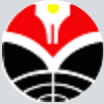

Jl. Dr. Setiabudhi 229 Bandung 40154, West Java, Indonesia





